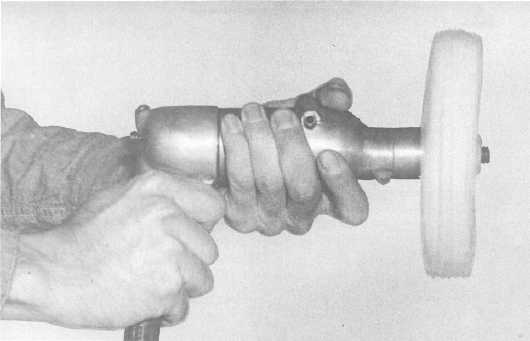Figure 14-2.—Buffing wheels.
Nos. 400A, 500A, and 600A. Wash the plastic after
each operation. During each step, the deeper
scratches left by the preceding grade of abrasive
should be removed.
BUFFING.—To remove the fine, hairline
scratches caused by sanding, transparent plastic may
be buffed. It is often possible to remove scratches by
buffing alone, provided the scratches are not too deep.
There are a number of standard commercial
buffing
compounds
satisfactory
for
use
on
transparent plastic enclosures. They are usually
composed very fine alumina or similar abrasive in
combination with wax, tallow, or grease binders.
They are available in the form of bars or tubes for
convenience in applying to the buffing wheel.
Plain tallow is often applied to the buffing wheel.
It may be used in addition to buffing compound, or it
may be used alone. In the latter case, tallow functions
similar to wax as it fills in hairline scratches and
gives a high gloss to the surface.
Buffing wheels are made of cotton cloth or felt. For
removing scratches caused by sanding, an of
“abrasive” wheel and a “finish” wheel are needed (fig.
14-2). The abrasive wheel, which is relatively
217.162
Figure 14-3.—Buffing wheel mounted in portable drill.
14-4



